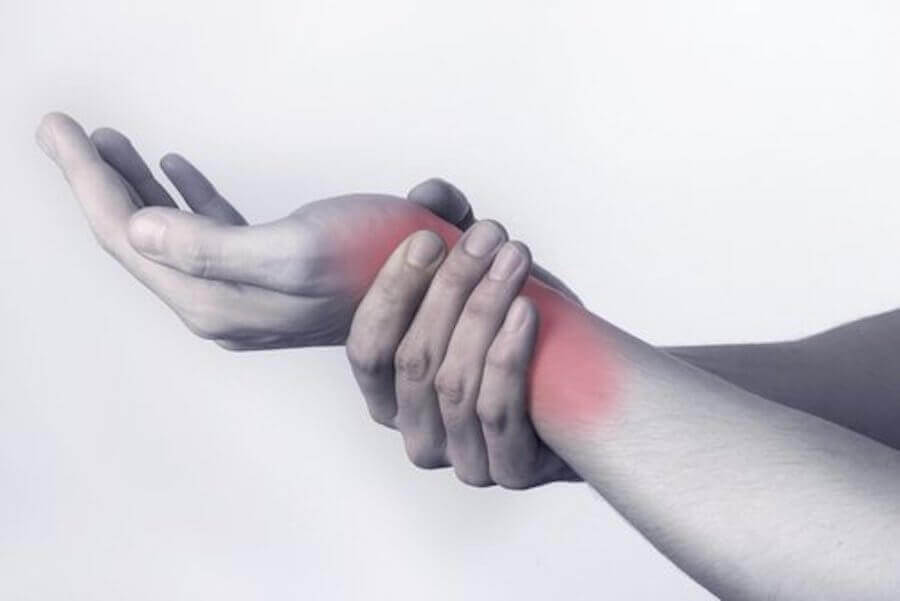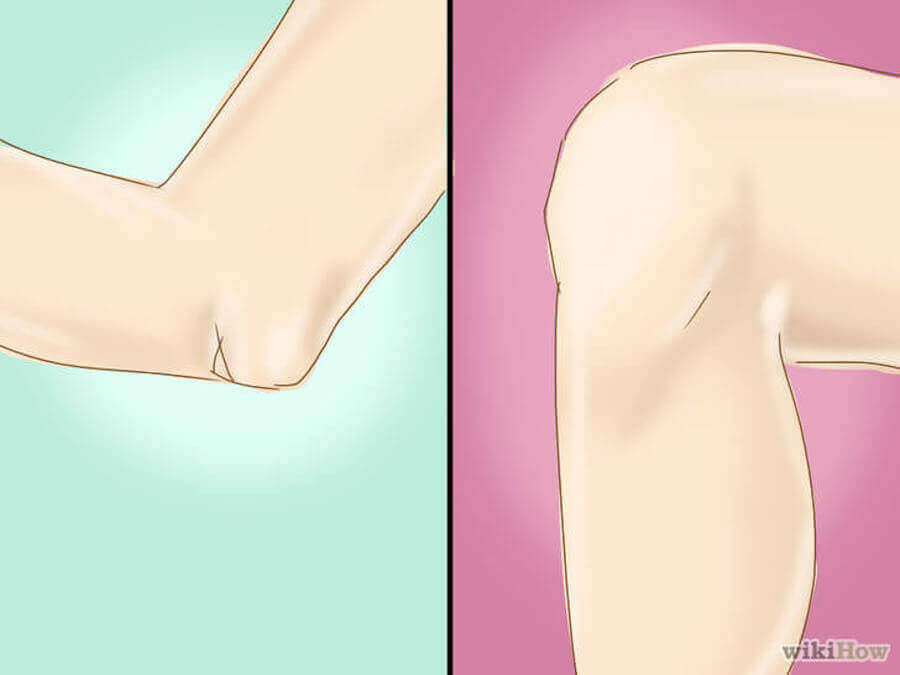What Is Tendinitis and How Do You Relieve It?

Have you ever suffered from severe joint pain due to muscle overload or injury? If this has happened to you, you probably know what tendinitis is.
This pathology affects the tendons or the fibrous structures that bind the bone to the muscles to allow movement. Find out what tendinitis is, what causes it, and how to relieve it here.
What is tendonitis?
Tendonitis is an inflammation and irritation of the tendons, which causes burning and pain in the affected area. Tendons are elastic or flexible structures that serve as a union between muscles and bones.
This condition causes higher sensitivity in the outer part of the joint and, although it can occur in any part of the body, it’s common in the shoulders, wrists, knees, and heels.
“Infrapatellar tendonitis is an inflammation of the tendon located under the kneecap, due to knee overload.”
According to the MSD health portal, “Infrapatellar tendonitis typically affects children 10 to 13 years of age. It’s an injury caused by excessive physical activities that require jumping and knee overloads, such as figure skating, basketball or volleyball.”
This disorder has a high rate of relapse once it occurs. However, if it’s not treated correctly, it causes pain and degeneration of the tendon, the consequence of which is the rupture of the structure for which surgery would be needed.

Causes of tendinitis
Tendinitis can be the product of an unexpected injury, although it may also be due to the repetition of a movement over time. Hence, the names of this condition are related to sports, for example, tennis or golfer’s elbow, pitcher’s or swimmer’s shoulder, jumper’s knee, etc. The onset of the disorder is mostly due to repetitive movements.
Likewise, we can say that it’s the result of muscle overload or the product of tendon aging. When the tendons lose elasticity, due to age, they become more vulnerable to injuries. Frequent trauma or unexpected sudden movements can also cause tendinitis.
Signs that indicate possible tendonitis
The main symptom of tendinitis is acute pain in the parts around the joint. This pain is described as penetrating and is exacerbated by movement or by touching the affected area. It can also occur with mild inflammation and heat irradiation in the affected area.
These are the symptoms that the doctor will look for to make the diagnosis. Sometimes you may be asked to perform imaging studies to rule out any complications or other problems.
Treatment to relieve tendonitis
In most cases, a treatment is designed to fit each person’s lifestyle properly to mitigate or reduce pain. However, sometimes the pain can become so acute that it hinders daily activities. That’s why before going to the doctor, if your pains aren’t too unbearable, you can put these remedies into practice:
Take an over-the-counter pain reliever
Medications such as ibuprofen and naproxen are excellent for treating tendonitis pain. Similarly, we advise that you use topical pain relievers such as lotions or gels that penetrate the skin to control swelling and pain.
A combination of both methods can be really useful if it lasts for about seven days. Ideally, signs of improvement will start to appear.
Rest
Rest is essential to give the joint and tissue time to recover. Otherwise, over some time, it’ll be impossible to perform work or do any activity that puts pressure on the affected tendon. In some cases, you may need to immobilize yourself with a splint or removable orthopedic mechanism.
While resting, you can also apply cold compresses to treat the pain. If it becomes chronic, apply heat. Elastic bandages and compressing of the area can also help relieve the condition.

Physiotherapy and corticosteroids
In extreme cases, your doctor may recommend that you inject cortisone to reduce inflammation and pain. This treatment, when accompanied by physiotherapy and programmed exercises, can strengthen the affected muscle and tendon.
Ideally, we want to promote healing and prevent future injuries. In extreme cases, dry puncture, ultrasonic wave treatment, or surgery is used.
In conclusion, tendinitis is a pathology that can affect anyone whose activities require making continuous movements. It manifests with a lot of pain, and the key to relieving it is rest. Remember that if the discomfort doesn’t go away, you should consult a doctor.
Have you ever suffered from severe joint pain due to muscle overload or injury? If this has happened to you, you probably know what tendinitis is.
This pathology affects the tendons or the fibrous structures that bind the bone to the muscles to allow movement. Find out what tendinitis is, what causes it, and how to relieve it here.
What is tendonitis?
Tendonitis is an inflammation and irritation of the tendons, which causes burning and pain in the affected area. Tendons are elastic or flexible structures that serve as a union between muscles and bones.
This condition causes higher sensitivity in the outer part of the joint and, although it can occur in any part of the body, it’s common in the shoulders, wrists, knees, and heels.
“Infrapatellar tendonitis is an inflammation of the tendon located under the kneecap, due to knee overload.”
According to the MSD health portal, “Infrapatellar tendonitis typically affects children 10 to 13 years of age. It’s an injury caused by excessive physical activities that require jumping and knee overloads, such as figure skating, basketball or volleyball.”
This disorder has a high rate of relapse once it occurs. However, if it’s not treated correctly, it causes pain and degeneration of the tendon, the consequence of which is the rupture of the structure for which surgery would be needed.

Causes of tendinitis
Tendinitis can be the product of an unexpected injury, although it may also be due to the repetition of a movement over time. Hence, the names of this condition are related to sports, for example, tennis or golfer’s elbow, pitcher’s or swimmer’s shoulder, jumper’s knee, etc. The onset of the disorder is mostly due to repetitive movements.
Likewise, we can say that it’s the result of muscle overload or the product of tendon aging. When the tendons lose elasticity, due to age, they become more vulnerable to injuries. Frequent trauma or unexpected sudden movements can also cause tendinitis.
Signs that indicate possible tendonitis
The main symptom of tendinitis is acute pain in the parts around the joint. This pain is described as penetrating and is exacerbated by movement or by touching the affected area. It can also occur with mild inflammation and heat irradiation in the affected area.
These are the symptoms that the doctor will look for to make the diagnosis. Sometimes you may be asked to perform imaging studies to rule out any complications or other problems.
Treatment to relieve tendonitis
In most cases, a treatment is designed to fit each person’s lifestyle properly to mitigate or reduce pain. However, sometimes the pain can become so acute that it hinders daily activities. That’s why before going to the doctor, if your pains aren’t too unbearable, you can put these remedies into practice:
Take an over-the-counter pain reliever
Medications such as ibuprofen and naproxen are excellent for treating tendonitis pain. Similarly, we advise that you use topical pain relievers such as lotions or gels that penetrate the skin to control swelling and pain.
A combination of both methods can be really useful if it lasts for about seven days. Ideally, signs of improvement will start to appear.
Rest
Rest is essential to give the joint and tissue time to recover. Otherwise, over some time, it’ll be impossible to perform work or do any activity that puts pressure on the affected tendon. In some cases, you may need to immobilize yourself with a splint or removable orthopedic mechanism.
While resting, you can also apply cold compresses to treat the pain. If it becomes chronic, apply heat. Elastic bandages and compressing of the area can also help relieve the condition.

Physiotherapy and corticosteroids
In extreme cases, your doctor may recommend that you inject cortisone to reduce inflammation and pain. This treatment, when accompanied by physiotherapy and programmed exercises, can strengthen the affected muscle and tendon.
Ideally, we want to promote healing and prevent future injuries. In extreme cases, dry puncture, ultrasonic wave treatment, or surgery is used.
In conclusion, tendinitis is a pathology that can affect anyone whose activities require making continuous movements. It manifests with a lot of pain, and the key to relieving it is rest. Remember that if the discomfort doesn’t go away, you should consult a doctor.
All cited sources were thoroughly reviewed by our team to ensure their quality, reliability, currency, and validity. The bibliography of this article was considered reliable and of academic or scientific accuracy.
- Almekinders, L. C. (1998). Tendinitis and other chronic tendinopathies. The Journal of the American Academy of Orthopaedic Surgeons. https://doi.org/10.5435/00124635-199805000-00003
- De Carli, A., Pulcinelli, F., Rose, G. D., Pitino, D., & Ferretti, A. (2014). Calcific tendinitis of the shoulder. Joints. https://doi.org/10.11138/jts/2014.2.3.130
- Sharma, P., & Maffulli, N. (2005). Tendon injury and tendinopathy: Healing and repair. Journal of Bone and Joint Surgery – Series A. https://doi.org/10.2106/JBJS.D.01850
- Tendinitis infrarrotuliana – Salud infantil – Manual MSD versión para público general [Internet]. Manual MSD versión para público general. 2018. https://www.msdmanuals.com/es-es/hogar/salud-infantil/trastornos-óseos-en-niños/tendinitis-infrarrotuliana
- Tendinitis [Internet]. Espanol.arthritis.org. 2018. Available from: http://espanol.arthritis.org/espanol/disease-center/tendinitis/
This text is provided for informational purposes only and does not replace consultation with a professional. If in doubt, consult your specialist.








